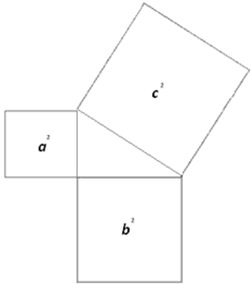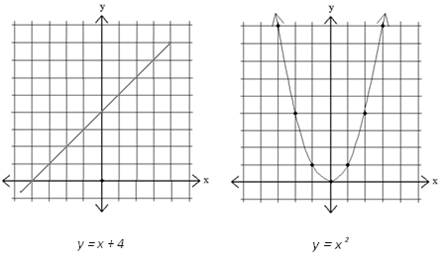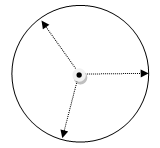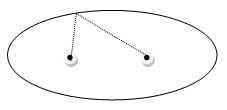In a range of meaningful contexts, students will be engaged in thinking mathematically and statistically. They will solve problems and model situations that require them to:
Measurement
GM5-1: Select and use appropriate metric units for length, area, volume and capacity, weight (mass), temperature, angle, and time, with awareness that measurements are approximate.
This means that when given a measuring task students will identify and use an appropriate metric unit. This involves the choice of an attribute (for example length, area, temperature) appropriate to the problem, the selection of an appropriate measurement tool, and the choice of unit adequate for the task, for example millimetres are needed to measure the length of solid material for construction. Measuring tasks should include a range of attributes and unit sizes, for example measuring the volume of the classroom in cubic metres, measuring the area of a piece of paper in square centimetres.
Students will be aware that measurements are not exact. The accuracy of a measurement can be affected by both human error and the accuracy of units, for example two people may give slightly different values for the width of a crayfish tail. This connects to the concept of rounding to a desired accuracy. Students need to understand that any measure involves a number (quantity) and unit of measure. Both determine the size of the measure, for example 1.80 metres represents a measure that is greater or equal to 179.5 cm and less than 180.5 cm.
Supporting teaching resources.
GM5-2: Convert between metric units, using decimals.
This means that students will apply their knowledge of decimal place value to convert between units for the same attribute, for example between units for weight. They should know the meaning of prefixes used in the metric system that act as “scalars” on base units, for example “kilo” means one thousand, “centi” means one hundredth.
Students are able to convert between units for the same attribute (for example volume, mass) with more than 1 decimal place, for example 0.125 kg = 125g, or 17.5 cm = 0.175.
Supporting teaching resources.
GM5-3: Deduce and use formulae to find the perimeters and areas of polygons and the volumes of prisms.
Students should create formulae for perimeters and areas of polygons by attending to features of those polygons. For perimeters they should recognise when side lengths are equal and use multiplicative strategies rather than additive ones. For example to calculate the perimeter of a parallelogram the student should double the length of two adjacent sides, for a regular pentagon they should multiply the length of one side by five.
Students should connect the formulae for finding areas of parallelograms, triangles, and trapeziums to the formula for the area of a rectangle using partitioning and reassembling the shapes. Students should be able to find perimeters and areas of shapes where the side lengths are simple decimals in order to understand that area, in particular, is not restricted to discrete situations where the units of measure can be counted individually.
Supporting teaching resources.
GM5-4: Find the perimeters and areas of circles and composite shapes and the volumes of prisms, including cylinders.
This means that students should find the ratio of the diameter of a circle to its perimeter (π) by measuring several circles and looking for the relationship.
They should understand that the formula for the circumference of a circle can be expressed in two ways:
C = 2πr (2 times pi times the radius), or
C = πD (pi times the diameter)
They should apply the formula to find the circumference of any circle, for example the circumference of a bicycle tyre. Students should find the formula for area of a circle by cutting several circles into increasingly small sectors and reassembling the sectors to approximate rectangles, A = πr2 (pi times the radius squared). They should apply this formula to finding the area of any circle.
Students will find the perimeters of composite shapes by adding the lengths of the sides together. At Level Five composite shapes are made up of common polygons (for example rectangles, triangles, semicircles). Students will find the area of composite shapes by calculating the areas of the parts and adding them together. Students will find the volumes of prisms by multiplying the area of their cross section by their length, for example for a cylinder multiply the area of the circle by the length of the cylinder.
Supporting teaching resources.
Click to download a PDF of second-tier material relating to Level 5 Measurement (207KB)
Shape
GM5-5: Deduce the angle properties of intersecting and parallel lines and the angle properties of polygons and apply these properties.
This means that students will know and apply angle properties relating to intersecting and parallel lines.
The angle properties of lines are:
- Vertically opposite angles are equal, for example a = d, b = c
- Adjacent angles add to 180o, for example a + b = 180o, a + c = 180o
- Corresponding angles are equal, for example a = e, b = f, c = g, d= h
- Interior angles add to 180o, for example c + e = 180o, d + f = 180o
- Alternate angles are equal, c = f, d = e
.png)
Students should apply the properties of intersecting and parallel lines to problems like constructing rectangular and skewed picture frames.
Students should find and apply the angle properties of polygons. They may find the formula for the internal angles of regular polygons (equal angles) by measuring and creating a table of results or by reasoning through cutting the polygons into triangles. These angles properties are:
- Interior angles of a polygon with n sides are ((n-2) x 180o)/n.
- Exterior angles of any polygon add to 360o.
Supporting teaching resources.
GM5-6: Create accurate nets for simple polyhedra and connect three-dimensional solids with different two-dimensional representations.
This means that students will use appropriate equipment to create accurate nets for simple polyhedra. Polyhedra are 3 dimensional shapes bound by polygons, for example a cube is made from 6 squares, a tetrahedron is made from 4 equilateral triangles, an octahedron is made from 8 equilateral triangles. The range of polyhedra should include the platonic solids, cuboids, right-angled prisms and pyramids. For the more difficult polyhedra students should learn to focus on the polygons around each vertex (corner) and symmetry of the polyhedron, for example the net for an icosahedron or a dodecahedron can be formed from two halves.
Students will form three dimensional shapes drawn as plan views, isometric projections or nets. To do so they will need access to material such as lego or construction cubes. Students will also be able to represent models of three dimensional shapes using plan views isometric projections or nets where appropriate.
Supporting teaching resources.
Position and orientation
GM5-7: Construct and describe simple loci.
A locus is a set of points satisfying a given condition. At Level Five simple loci are lines represented by linear and simple quadratic equations on number planes or circles and ellipses through physical construction.
This means that students will draw the graph of linear and simple quadratic equations. They will also be able to identify the linear equation for the graph of a given simple loci.
They will also describe the common properties of points on a circle or ellipse and recognise the circle as a special case of the ellipse.
All points on a circle are the same distance from the centre. That distance is the radius.
All points on an ellipse share a common sum of distances to two foci. As the foci close the ellipse “morphs” into a circle. Supporting teaching resources.
GM5-8: Interpret points and lines on co-ordinate planes, including scales and bearings on maps.
This means that students will use co-ordinate axes including positive and negative integers and decimals. Straight lines will be described using equations or co-ordinate pairs, for example y = x + 4, or “the line that passes through (-4, 0.5) and (2, 1.5)”.
Students will interpret points and lines on a map by calculating distances using map scales and directions using compass bearings for example 210
o. At Level Five students should be using multiplicative and proportional strategies to interpret scales, and interpreting compass bearings involving angles. For example they should be able to identify the approximate location of a person on a map given two bearings to that person from given landmarks.
Supporting teaching resources.
Transformation
GM5-9: Define and use transformations and describe the invariant properties of figures and objects under these transformations.
This means that students will accurately describe the transformation a figure or object has undergone and describe the invariant properties. At Level Five this will include the angle and centre of rotation, the distance and direction of translation, the magnitude and centre of enlargement (including fractional changes for example 1 1/2), and the line of reflection. Students will also draw the results of transformations on objects.
Students will be able to describe which properties of shapes change for each transformation:
- Under rotation lengths, areas, angles do not change but orientation does.
- Under reflection lengths, areas and angles do not change but orientation does.
- Under translation lengths, areas, angles and orientation do not change.
- Under positive enlargement angles and orientation do not change but lengths and areas do.
Supporting teaching resources.
GM5-10: Apply trigonometric ratios and Pythagoras’ theorem in two dimensions.
This means that students will apply trigonometric ratios to find the angles and lengths of sides in right-angled triangles. Students need to recognise two features of trigonometric ratios:
- Given similar right angled triangles the ratios of side lengths are the same, for example
.png)
For both triangles the ratio of the sides opposite and adjacent to angle A is 6/8 = 0.75. For any similar triangle this is also true. This ratio is the tangent of angle A, so A = 37°.
- The trigonometric ratios can be found using a right-angled triangle with a hypotenuse of one and applied to any other similar right angled triangle by scaling.
The trigonometric ratios are:
- sin θ = side opposite θ/hypotenuse,
- cos θ = side adjacent to θ/hypotenuse,
- tan θ = side opposite θ/side adjacent to θ
These ratios are often remembered using the mnemonic SOH CAH TOA.
Students will use Pythagoras’ theorem (a2 + b2 = c2) to find the lengths of sides of right angle triangles.

Supporting teaching resources.
.png)



.png)
